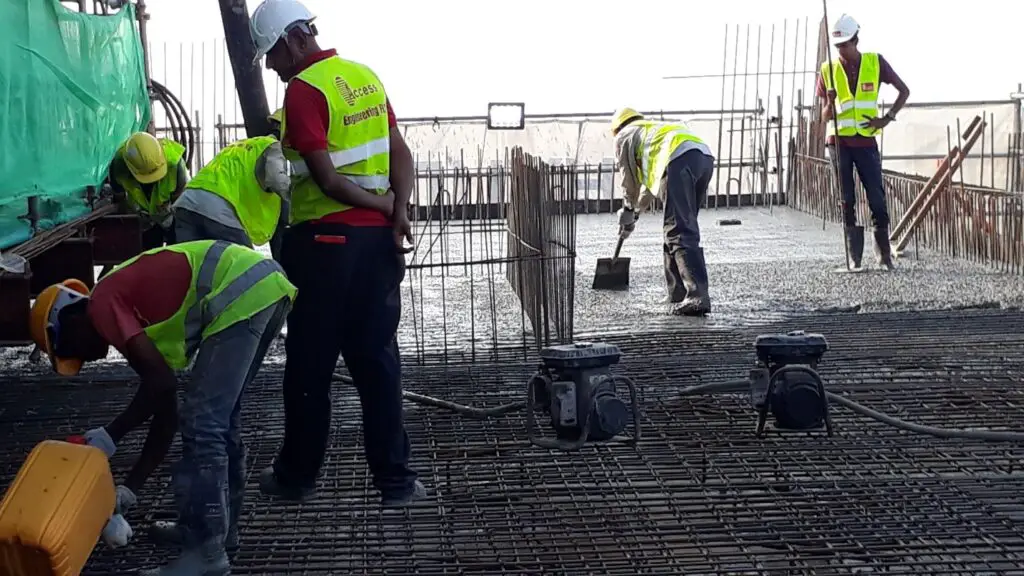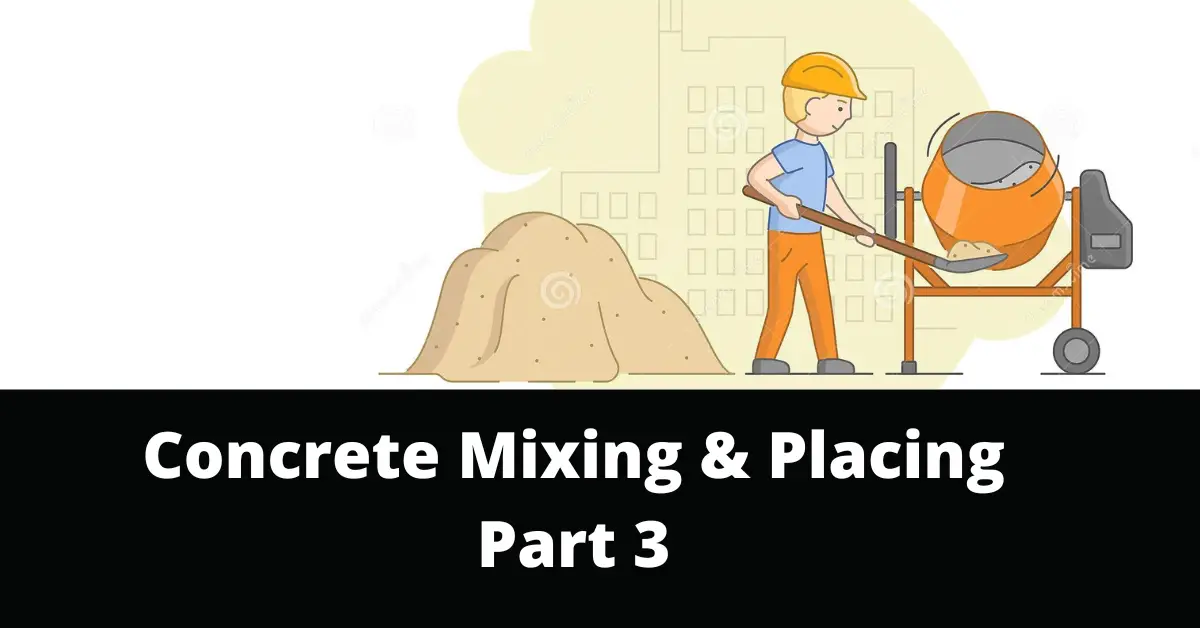In this article, you will learn how to properly mix and place concrete.
For a better understanding, first read parts 1 and part 2 of this article.
Table of Contents
Preparation for concreting
- General inspection
When carrying out a general inspection, check the following:
a) Confirm the availability of the following items: materials, including ready-mixed concrete; labor; plant and equipment; power and water supply; and standby equipment and spares.
b) Verify that the setting out has been checked.
c) Verify that previous permanent work has been inspected.
d) If necessary, obtain a weather forecast.
e) Examine the accessibility of discharge points and access platforms.
f) Verify the batching plant’s readiness.
g) Examine the communication system.
h) Ensure that all safety regulations are followed.
i) Confirm transportation, placement, and compacting, finishing, curing, and testing arrangements.
- Earth surfaces
When concreting against earth surfaces, check:
a) earth slope stability;
b) the safety of earth faces while the construction plant is in use;
c) arrangements for water removal

- Other surfaces
When concreting against other surfaces, check the following.
a) Falsework for design conformity, stability and bracing, rigidity, and precamber.
b) Formwork for:
1) dimensional conformity within allowable tolerances;
2) rigidity and strength;
3) proper use and number of ties
4) provision of a specification-compliant surface, including the application of a release agent;
5) Joint tightness and sealing
6) final clean-up before pouring concrete;
7) arrangements for removal.
- Cleanliness
Remove all trash, debris, and standing water from all surfaces where concrete will be poured.
Waste nails, wire clippings, screws, and other objects should also be removed from the formwork because they can stain the concrete and formwork faces.
Remove any loose scale or rust from any structural steel that needs to be encased.
Check to see if the formwork was treated with a release agent.
Temporary inspection openings should be provided where the forms are deep.
The concrete should be placed quickly in its final position so that it does not become too stiff to work with.
The concrete should be placed as close to its final location as possible.
It should never be moved by vibrating it and allowing it to flow, as this may cause segregation, which will show on the finished work’s surface.

- Joints, inserts and openings
For joints, inserts, and openings, check:
a) joint, dowel, water bar, and sliding layer construction;
b) inserts and box-outs to ensure precision and security;
c) adjusting stop-ends;
d) kicker formation arrangements;
e) hardened surface preparation

- Reinforcement
For reinforcement, check:
a) correct size, type, markings, location, and cover;
b) proper anchorages and laps;
c) that it is firmly fastened;
d) surface condition;
e) the use of spacers, including their type and size
The objective of the pre-concrete inspections is to guarantee that the concreting will proceed without delay or defect.
- Weather conditions
Unless otherwise instructed, do not begin mixing concrete for use in the open in heavy rain.
Avoid placing it out in the rain.
If the concrete is already being placed and heavy rain begins, take all reasonable precautions to protect the concrete.
In hot and humid weather, the concrete should be covered while being transported.
- Sampling and testing of concrete
When sampling and testing concrete to make sure it meets specifications, make sure the right steps are taken and that the equipment is in good shape.
a) complete certificates of sampling, specimen preparation, curing, and testing to confirm specification compliance;
b) transport concrete cubes to the test laboratory, ensuring that they are kept moist, are not damaged, and spend the minimum time in transit.
Placing Concrete
There are several modes of transportation available, ranging from hand wheelbarrows to concrete pumps.
The method chosen will be determined by the size and complexity of the site.
Concrete must be transported in all cases so that it does not segregate.
Place the concrete in one continuous operation between and up to the construction joints or other limiting features.
If, for any reason, concrete placing has to be stopped for any period such that the concrete will not remain plastic, obtain instructions and form a proper, additional construction joint.
Discharge concrete through the reinforcement or other obstructions with care so as to avoid dispersal, segregation or loss of ingredients.













